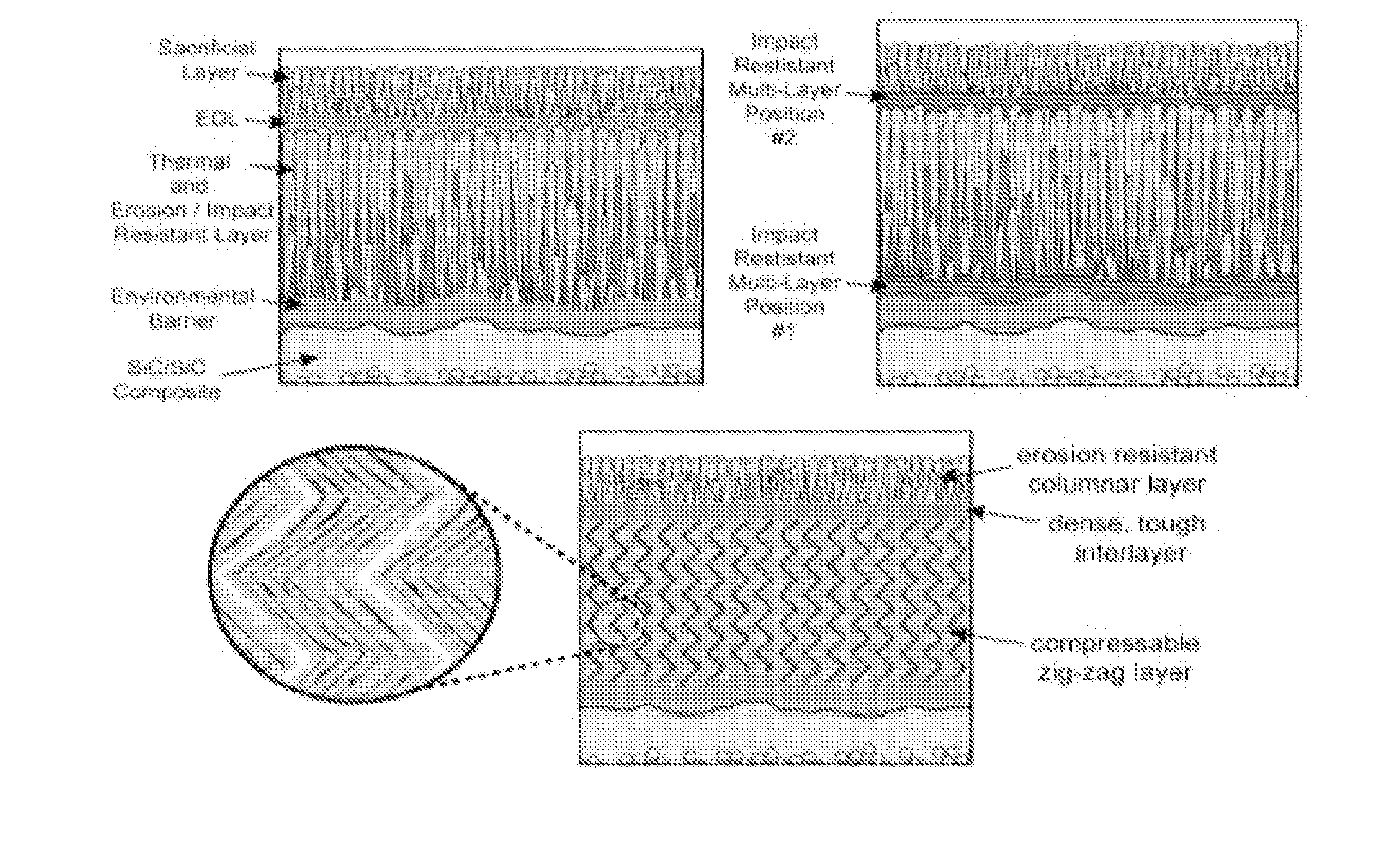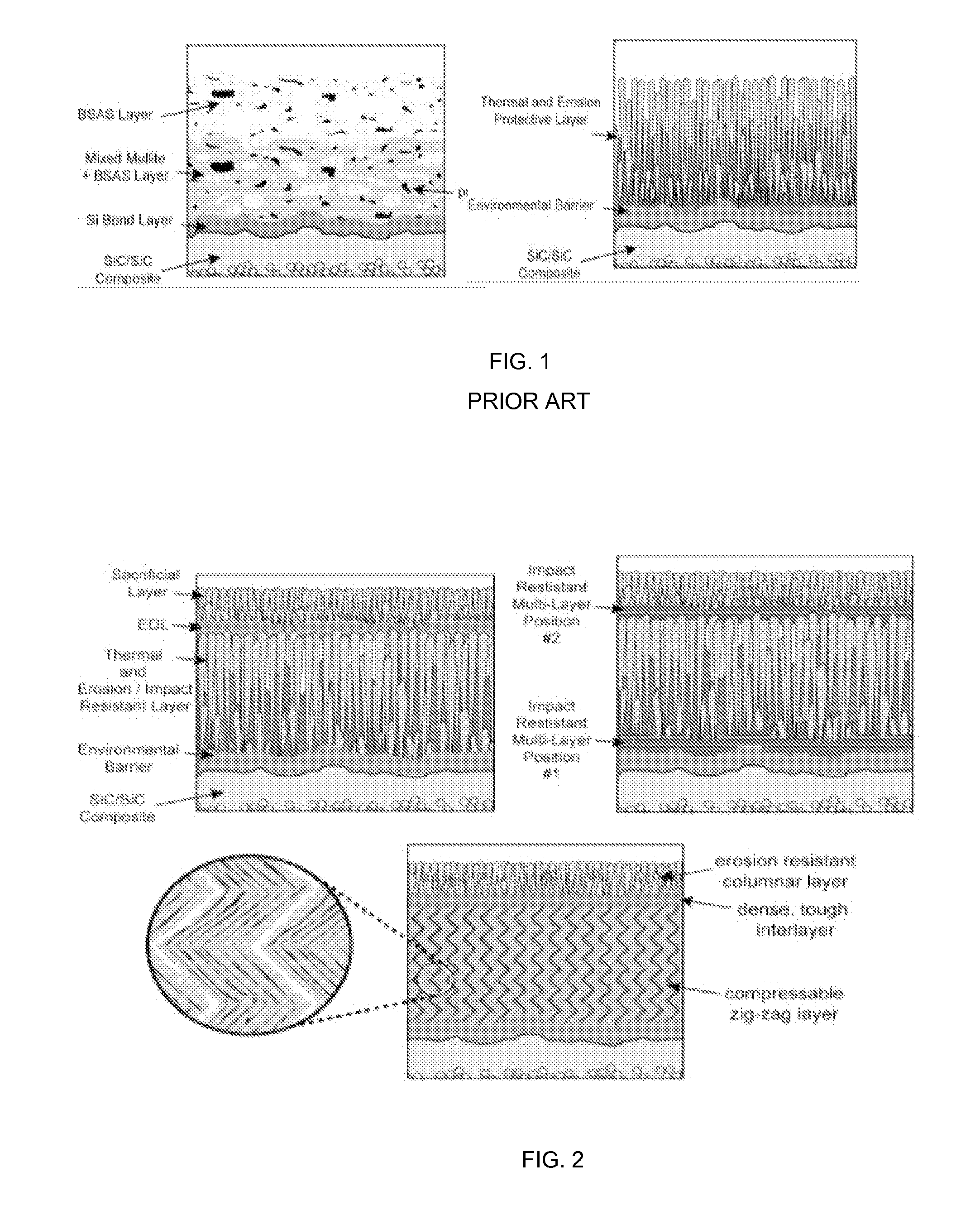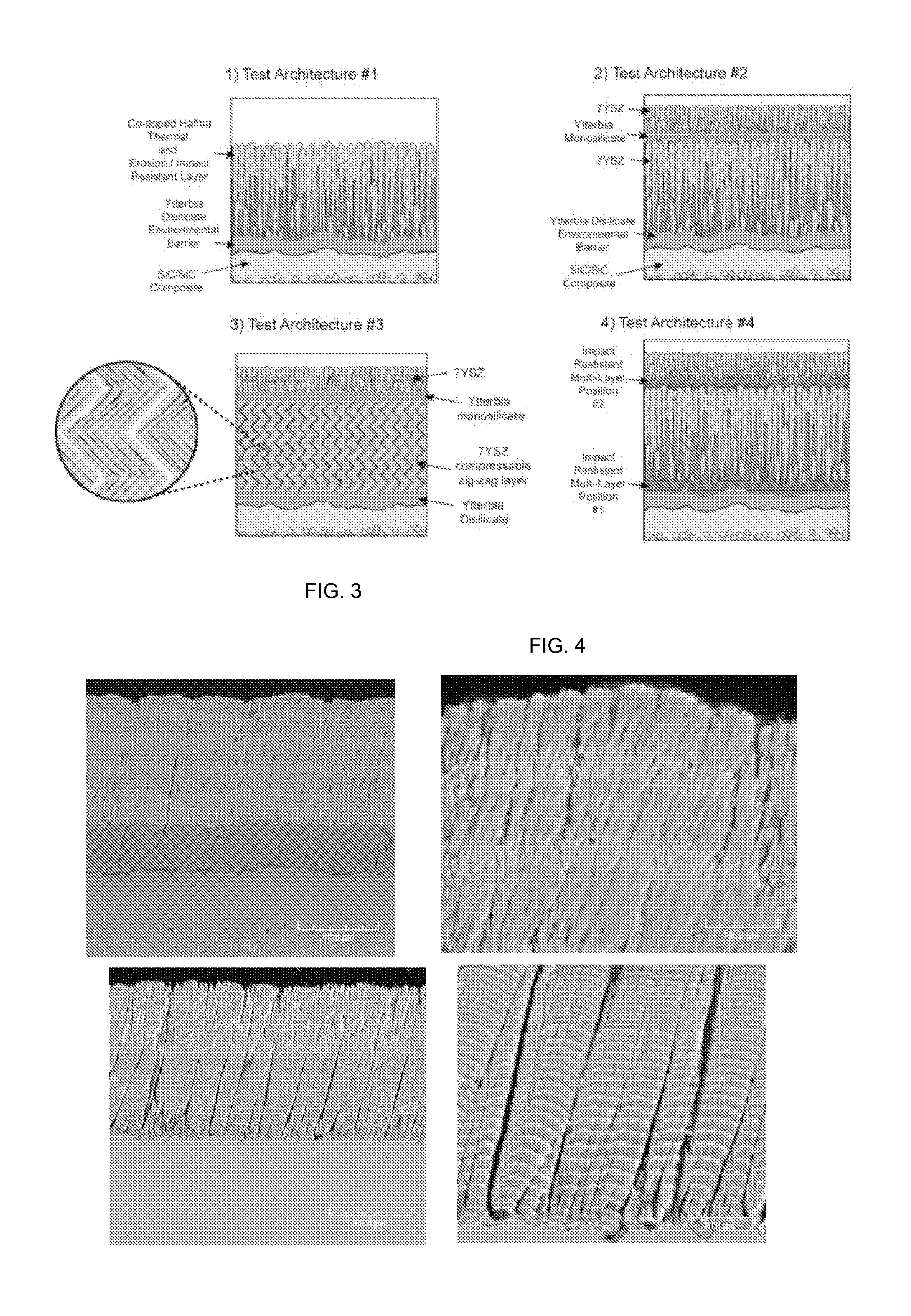Impact and erosion resistant thermal and environmental barrier coatings
a technology of thermal and environmental barrier coatings and anti-eroding, which is applied in the direction of superimposed coating processes, machines/engines, mechanical equipment, etc., can solve the problems of altering the effectiveness of the silica scale, sand erosion, and significant erosion damage from sand ingestion, so as to enhance the protection of impact and erosion, the effect of resisting impact and erosion damag
- Summary
- Abstract
- Description
- Claims
- Application Information
AI Technical Summary
Benefits of technology
Problems solved by technology
Method used
Image
Examples
Embodiment Construction
[0056]The use of Physical Vapor Deposition (PVD) and especially gas jet assisted PVD approaches enables the control over pore volume fraction and morphology in the deposited layer. Such approaches have been demonstrated to have the ability to form dense layers, layers with elongated columnar pores of a controllable spacing, layers having fine scaled feathery pores, nanoscaled globular pores and “zig-zag” shaped pores.
[0057]Fine scaled multi-layer coatings can be created which can uniquely alter the toughness and thermal conductivity of deposited layers.
[0058]Based on the above, it is clear that the use of PVD based processing approaches for T / EBC system deposition enables the ability to incorporate multiple novel concepts into an advanced impact resistant T / EBC system. The use of one or more of these concepts results in a T / EBC coating systems having improved toughness and the ability to absorb and / or deflect the energy imparted by the high velocity impact of a particle onto the coa...
PUM
| Property | Measurement | Unit |
|---|---|---|
| diameter | aaaaa | aaaaa |
| diameter | aaaaa | aaaaa |
| thickness | aaaaa | aaaaa |
Abstract
Description
Claims
Application Information
 Login to View More
Login to View More - R&D
- Intellectual Property
- Life Sciences
- Materials
- Tech Scout
- Unparalleled Data Quality
- Higher Quality Content
- 60% Fewer Hallucinations
Browse by: Latest US Patents, China's latest patents, Technical Efficacy Thesaurus, Application Domain, Technology Topic, Popular Technical Reports.
© 2025 PatSnap. All rights reserved.Legal|Privacy policy|Modern Slavery Act Transparency Statement|Sitemap|About US| Contact US: help@patsnap.com



